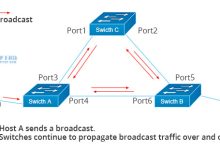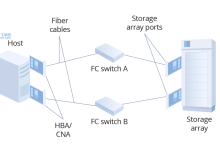当我们的DB2数据库在Linux环境中运行时,随着数据的不断增长,我们可能需要扩展DB2表空间。扩展DB2表空间可以避免数据库达到更大限制而无法进行数据插入等操作。在这篇文章中,我们将了解如何在Linux环境中扩展DB2表空间。
在开始之前,我们需要检查表空间的状态和当前的空间使用情况。我们可以使用以下命令检查表空间的状态:
“`
db2 connect to
db2 list tablespaces show detl
“`
这将列出所有表空间的详细信息,包括空间使用情况和大小。如果我们发现一个表空间的空间快要满了,我们需要扩展它的大小。
以下是在Linux环境中扩展DB2表空间的步骤:
1. 使用以下命令检查表空间的类型:
“`
db2 connect to
db2 list tablespaces show detl
“`
我们将看到所有表空间的详细信息,包括类型。我们需要知道表空间类型,因为扩展的过程会因表空间类型而异。例如,临时表空间的扩展方法与数据表空间的扩展方法不同。
2. 在扩展表空间之前,我们需要检查文件系统的可用空间。我们可以使用以下命令来检查剩余空间:
“`
df -h
“`
这将显示可用磁盘空间的详细信息。
3. 如果我们需要扩展数据表空间,我们可以使用以下命令扩展:
“`
db2 connect to
db2 “alter tablespace extend (all )”
“`
其中,“是表空间名称,“是我们想要增加的空间大小。这里的所有表单元格表示扩展表空间中的所有容器。
如果我们只想为特定容器添加空间,我们可以将`all`替换为容器标识符。例如,我们可以使用以下命令扩展特定容器的空间:
“`
db2 connect to
db2 “alter tablespace extend ( )”
“`
这里,“是容器标识符,“是增加的空间大小。
4. 如果我们需要扩展临时表空间,我们可以使用以下命令:
“`
db2 connect to
db2 “alter system temporary tablespace extend (all )”
“`
这里的语法与数据表空间的语法很相似。同样,如果我们只想扩展特定容器的临时表空间,我们可以替换`all`为容器标识符。
5. 扩展表空间后,我们可以使用以下命令再次检查表空间的状态:
“`
db2 list tablespaces show detl
“`
我们将看到表空间的容量已经增加了。
相关问题拓展阅读:
- 如何在Linux虚拟环境下搭建DB2数据库DPF
如何在Linux虚拟环境下搭建DB2数据库DPF
一、创建用户和组
1、使用root用户添加系统用户
/usr/in/groupadd -g 1997 db2igrp
#instance所在的group,加入这个group的所有用户都具有DBA权限/usr/in/groupadd -g 1998 db2fgrp
#fenced用户所在的group/usr/in/useradd -ug db2igrp -d /cbusdb/db2inst1 db2inst1
#db2inst1用户/usr/in/useradd -ug db2fgrp -d /cbusdb/db2fenc1 db2fenc1
#db2fenc1用户/usr/in/groupadd db2fadmin
/usr/in/useradd -g db2fadmin db2admin
2、使用root用户添加数据逗毁库账号
/opt/ibm/db2/V10.5/instance/db2icrt -s ese -u db2fenc1 db2inst1
#在所有的机器上,使用root用户,建立db2 admin server:
/opt/ibm/db2/V10.5/instance/dascrt -u db2admin#启动db2 admin server:
db2admin start
3、修改节点配置文件
#vim /cbusdb/db2inst1/sqllib/db2nodes.cfg0 cbusdb01 0
1 cbusdb01 1
2 cbusdb02 0
3 cbusdb02 1
4、修改实例参数
su – db2inst1
db2iauto -on db2inst1
db2set DB2_SKIPINSERTED=on
db2set DB2_USE_ALTERNATE_PAGE_CLEANING=ondb2set DB2_EVALUNCOMMITTED=on
db2set DB2_SKIPDELETED=on
db2set DB2COMM=TCPIP
db2set DB2FCMCOMM=TCPIP4
db2set DB2RSHCMD=/bin/rsh
#注意如果配置的ssh则此处需要修改成
db2set DB2RSHCMD=/usr/bin/ssh
db2set DB2CODEPAGE=1386
db2set DB2TERRITORY=86
db2set DB2_PARALLEL_IO=*
5、哪携配置服务端口
DB2c_db2inst/tcp
DB2_db2inst/tcp
DB2_db2inst1_/tcp
DB2_db2inst1_/tcp
DB2_db2inst1_/tcp
DB2_db2inst1_/tcp
DB2_db2inst1_END 61008/tcp
6、调整系统参数,设置dpf所需的资源
/in/sysctl -w kernel.sem=“024”/in/sysctl -w kernel.msgmnb=16384
/in/sysctl -w kernel.msgmni=1024
/in/sysctl -w kernel.msgmax=8192
/in/sysctl -w kernel.shmmni=4096
/in/sysctl -w kernel.shmall=
/in/sysctl -w kernel.shmmax=
7、修改环境变量
cat 。/sqllib/db2profile 》.profile
vi .bash_profile #添加如下信息:
/cbusdb/db2inst1/sqllib/db2profile
二、配置主机名
分别在两台主机上修改如下文件:
#vi /etc/sysconfig/network
#
李指伏 #NETWORKING=yes
#HOSTNAME=cbusdb01
#
#vi /etc/hosts
#
#127.0.0.1 localhost localhost.localdomain localhost4 localhost4.localdomain4 cbusdb01#::1 localhost localhost.localdomain localhost6 localhost6.localdomain6#192.168.1.122 cbusdb01
#192.168.1.123 cbusdb02
#
三、配置rsh
rsh是远程运行shell的服务.db2使用rsh服务运行启动和停止数据库服务器的命令,以及大部分管理命令。
1、安装rsh
#yum install rsh*
2、配置rsh的安全文件
#vi /etc/securetty
#add the content
#—-
#rsh
#rlogin
#rexec
#—-
3、修改rsh的配置参数/etc/xinetd.d/rsh ##在生产环境建议配置ssh免密登录
#vi /etc/xinetd.d/rsh
service shell
{
socket_type = stream
wait = no
user = root
log_on_success += USERID
log_on_failure += USERID
server = /usr/in/in.rshd
disable = no
}
4、修改rsh的配置文件rlogin
#vi /etc/xinetd.d/rlogin
service login
{
disable = no
socket_type = stream
wait = no
user = root
log_on_success += USERID
log_on_failure += USERID
server = /usr/in/in.rlogind
}
4、免密登陆,实例用户db2inst1的家目录中创建.rhosts文件
cat $HOME/.rhosts
cbusdb01 db2inst1
cbusdb02 db2inst1
5、CentOS7.0需要单独下载xinetd
yum install xinetd #低于此版本可不下载
6、重启rsh服务
service xinetd restart
7、验证rsh服务
rsh cbusdb01 date
rsh cbusdb02 date
#db2_all echo hi 没有返回
yum install ksh
四、配置时钟服务器
1、安装ntp服务器
#yum install ntp*
# ntpdate -u 202.112.10.36
#ntpdate cn.pool.ntp.org
#service ntpd start
#chkconfig ntpd on
2、修改ntp配置
#允许内网其他机器同步时间
restrict 192.168.1.0 mask 255.255.255.0 nomodify notrap
#互联网时间服务器
server 210.72.145.44 perfer # 中国国家受时中心server 202.112.10.36
# 1.cn.pool.ntp.orgserver 59.124.196.83
# 0.asia.pool.ntp.org#允许上层时间服务器主动修改本机时间
restrict 210.72.145.44 nomodify notrap noquery
restrict 202.112.10.36 nomodify notrap noquery
restrict 59.124.196.83 nomodify notrap noquery
#外部时间服务器不可用时,以本地时间作为时间服务
server 127.0.0.1
fudge 127.0.0.1 stratum 10
3、修改时区
cp -f /usr/share/zoneinfo/Asia/Shanghai /etc/localtime
clock -w
4、在节点2上配置时钟服务器
*/5 * * * * /usr/in/ntpdate cbusdb01
五、配置nfs服务
1、yum install nfs*
# yum install portmap rpcbind #安装nfs客户端
2、配置需要共享的资源
#vi /etc/exports
/cbusdb *(rw,sync,no_root_squash)
/cbusdblog *(rw,sync)
3、启动nfs server
service rpcbind start
service nfs start
service nfslock restart
4、导出资源
exportfs -rv
5、显示NFS Server上所有的共享卷
showmount -e
6、在客户端挂载共享目录
#mount 192.168.1.122:/cbusdb /cbusdb
#vi /etc/fstab
cbusdb01:/cbusdb /cbusdb nfs rw,timeo=300,retrans=5,hard,intr,bg,nolock,suid
六、关闭selinux
vim /etc/sysconfig/selinux
#SELINUX=disabled
七、测试、创建数据库
1、启动数据库
#db2start
2、创建数据库
#db2 “create db cbusdb on /cbusdblog using codeset gbk territory cn”
关于linux db2 扩表空间的介绍到此就结束了,不知道你从中找到你需要的信息了吗 ?如果你还想了解更多这方面的信息,记得收藏关注本站。

 国外主机测评 - 国外VPS,国外服务器,国外云服务器,测评及优惠码
国外主机测评 - 国外VPS,国外服务器,国外云服务器,测评及优惠码










